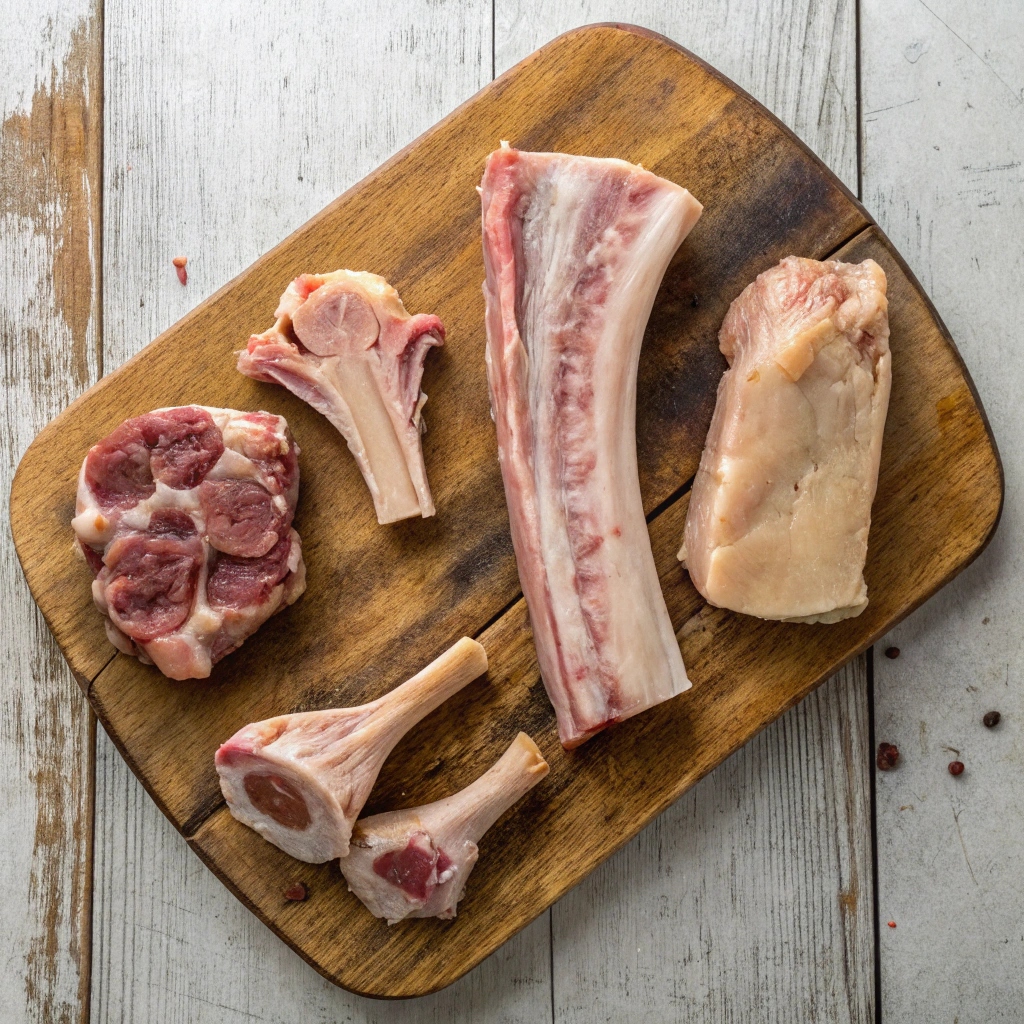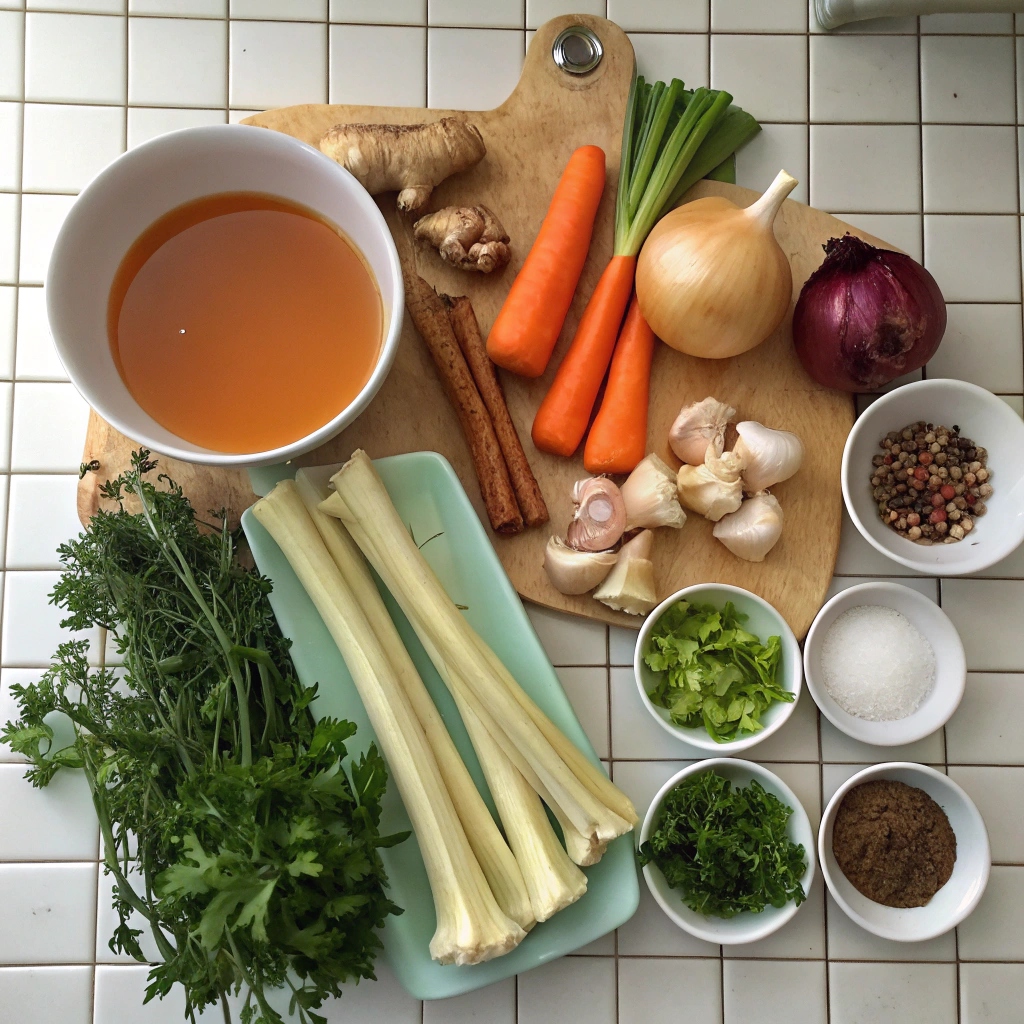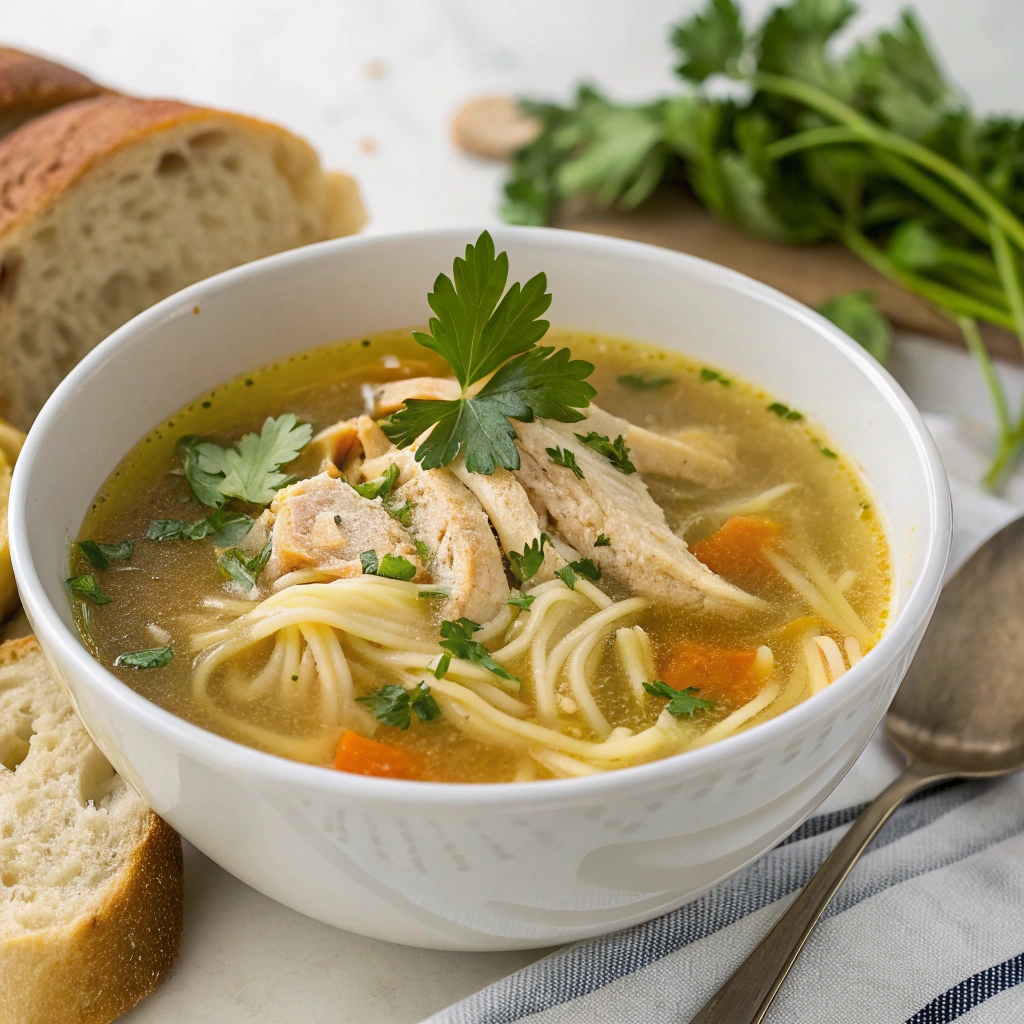There’s something magical about a pot of soup bubbling away on the stove, filling your home with mouthwatering aromas. But the secret ingredient behind every great broth? Soup bones! These unsung heroes can transform a simple pot of water into a rich, flavorful base packed with nutrients. If you’ve ever wondered how to make your soups and stews truly stand out, this guide has all the answers.
Table of contents
What Are Soup Bones? An Overview
So, what exactly are soup bones? Simply put, they’re the bones left over from meat cuts like beef, chicken, or pork. These bones, often considered scraps, are loaded with marrow, connective tissues, and sometimes bits of meat. When cooked, they release an abundance of flavor and nutrients, turning ordinary soups into something extraordinary.
“Soup bones are like nature’s flavor bombs, taking your culinary creations from good to ‘I need the recipe!’ in no time.”

Types of Soup Bones: Beef, Chicken, and Pork
Not all soup bones are created equal! Here’s a breakdown of the most common types:
- Beef Bones: Think marrow bones, knuckle bones, or oxtail. These are great for hearty, robust broths.
- Chicken Bones: Perfect for lighter soups, like chicken noodle soup. Chicken carcasses and wings work wonders.
- Pork Bones: Ideal for Asian-inspired soups, such as ramen or tonkotsu broth.
Each type of bone brings its unique flavor profile to the table, making it easy to customize your dishes.
Why Soup Bones Are Essential for Cooking
Why bother with soup bones? Here’s why:
- Flavor: The marrow and connective tissue in bones release incredible umami, the “fifth taste.”
- Nutrients: Bones are rich in collagen, calcium, and minerals that are excellent for your health.
- Versatility: Whether you’re making broth, stew, or gravy, soup bones are a must-have ingredient.
The Nutritional Value of Soup Bones
When it comes to health benefits, soup bones are a goldmine. Let’s dive into what makes them so nutritious.
Vitamins and Minerals Found in Soup Bones
Soup bones contain essential nutrients, including:
- Calcium: For strong bones and teeth
- Magnesium: Supports muscle and nerve function
- Phosphorus: Vital for energy production
Here’s a quick look at the nutritional content of soup bones:
| Nutrient | Amount per Serving |
|---|---|
| Calcium | 50 mg |
| Magnesium | 10 mg |
| Phosphorus | 40 mg |
| Collagen | 7 g |
| Protein | 10 g |
Collagen and Gelatin: Why They’re Great for Your Health
Collagen and gelatin are like the dynamic duo of nutrition. Collagen supports joint health, while gelatin improves gut health and digestion. Ever wonder why your soup gets jelly-like when refrigerated? That’s the gelatin doing its thing!
“Drinking a bowl of bone broth is like giving your body a warm, nourishing hug.”
Benefits of Using Soup Bones
Soup bones aren’t just for flavor—they’re packed with health benefits. Let’s explore how they can improve your well-being.
Improved Gut Health and Digestion
The gelatin in soup bones helps seal and soothe the gut lining, making it ideal for those with digestive issues. It’s like a reset button for your tummy!
Better Skin, Hair, and Nails
Collagen isn’t just a buzzword in beauty products—it’s the real deal. Regularly consuming bone broth can lead to glowing skin, shiny hair, and strong nails.
Joint and Bone Health
Calcium, magnesium, and collagen work together to strengthen your bones and joints. Whether you’re an athlete or just want to stay active, soup bones are your secret weapon.
Common Problems When Cooking with Soup Bones
Cooking with soup bones can feel like an art form, but it comes with its fair share of challenges. Let’s tackle the most common issues so you can create that perfect broth every time.
Cloudy Broth: Causes and Fixes
A cloudy broth is a common frustration for many cooks. While it doesn’t affect the taste, it can make your soup look less appetizing.
Why it happens:
- Boiling the broth too aggressively
- Not skimming off impurities
- Using dirty or uncleaned bones
How to fix it:
- Start with a cold-water soak: Rinse the bones and soak them in cold water for 30 minutes to remove excess blood and impurities.
- Simmer, don’t boil: Keep the heat low and let the broth simmer gently.
- Skim the scum: Use a ladle or spoon to remove the foam that forms during the first hour of cooking.
“Think of it like this: a gentle simmer is like a slow dance, coaxing out the flavors without stirring up trouble.”
Dealing with Fat and Grease
Too much fat in your broth can make it greasy and heavy, which isn’t ideal.
How to manage it:
- After cooking, chill the broth in the fridge. The fat will solidify on top, making it easy to remove.
- Use a fat separator tool while pouring the broth into containers.
Pro tip: Save some of the fat for cooking! It’s flavorful and great for sautéing vegetables.
Avoiding Bland Flavor
Ever made broth that tasted like, well, water? Bland broths are a common issue, but they’re easy to fix.
Tips for rich flavor:
- Roast the bones first: Roasting enhances the depth of flavor. Place the bones on a baking sheet, drizzle with olive oil, and roast at 400°F for 30-40 minutes.
- Add aromatics: Think onions, garlic, carrots, and celery. These veggies are the backbone of a great broth.
- Season later: Add salt and spices at the end of cooking to control the flavor.
“The secret to bold flavor is layering—just like building a house, you start with a strong foundation.”
How to Choose the Best Soup Bones
Not all soup bones are created equal. Selecting the right ones is key to a flavorful, nutrient-packed broth.
Organic vs. Conventional Soup Bones
Should you go organic? Here’s what to consider:
- Organic bones: These come from animals raised without antibiotics or hormones, which means cleaner, higher-quality broth.
- Conventional bones: Cheaper and easier to find, but they may contain traces of additives.
If budget allows, organic is always the better option.
Where to Source High-Quality Soup Bones
Finding good soup bones can feel like a scavenger hunt. Here’s where to look:
- Local butcher shops: They often sell bones at a low cost or even give them away for free!
- Farmers’ markets: These are great for sourcing organic and grass-fed options.
- Grocery stores: Many supermarkets stock soup bones in the meat section.
Step-by-Step Guide to Making the Perfect Broth
Ready to create magic in the kitchen? Follow these steps to make the perfect broth.
Essential Ingredients for Soup Bone Broth
Here’s a simple ingredient list to get started:
| Ingredient | Quantity |
|---|---|
| Soup bones | 2-3 lbs |
| Onion | 1 large (quartered) |
| Carrots | 2 (chopped) |
| Celery | 2 stalks (chopped) |
| Garlic cloves | 4 (smashed) |
| Bay leaves | 2 |
| Peppercorns | 1 tsp |
| Water | Enough to cover |
Preparation Techniques for Soup Bones
- Rinse and soak: Wash the bones thoroughly to remove any debris.
- Roast for flavor: Arrange the bones on a baking sheet and roast at 400°F for 30-40 minutes.
- Blanch (optional): For a cleaner broth, blanch the bones in boiling water for 5 minutes, then rinse.
Cooking Methods: Stovetop, Slow Cooker, and Instant Pot
No matter what equipment you have, there’s a method for you:
1. Stovetop:
- Add the bones, vegetables, and seasonings to a large pot.
- Cover with water and bring to a gentle simmer.
- Cook for 8-12 hours, skimming occasionally.
2. Slow Cooker:
- Place all ingredients in the slow cooker.
- Set to low and cook for 12-24 hours.
3. Instant Pot:
- Add ingredients to the Instant Pot.
- Use the “Soup/Broth” setting and cook for 2-3 hours.
“Think of your broth as a slow symphony—the longer it cooks, the richer the melody.”

Creative Recipes Using Soup Bone Broth
Now that you’ve mastered the basics, let’s put that broth to good use! Here are some creative recipes to inspire you.
Classic Chicken Soup Recipe
A timeless recipe that’s perfect for cold days or when you’re feeling under the weather.
Hearty Beef Stew Recipe
Rich, savory, and packed with flavor—this recipe is comfort food at its finest.
Vegan Broth Alternatives (for Comparison)
For your plant-based friends, learn how to make a delicious vegan broth with mushrooms, seaweed, and miso.
Creative Recipes Using Soup Bone Broth
Once you’ve crafted that golden, flavorful broth, the possibilities are endless. From classic soups to exciting new dishes, let’s explore some creative ways to use your homemade soup bone broth.
Classic Chicken Soup Recipe
Nothing beats a warm bowl of chicken soup. This recipe is packed with flavor and is a perfect comfort meal for chilly nights or when you’re feeling under the weather.
Ingredients:
- 4 cups of soup bone broth (chicken or mixed)
- 1 cup cooked shredded chicken
- 1 cup chopped carrots
- 1 cup chopped celery
- 1 medium onion, diced
- 1 tsp minced garlic
- 1 tsp dried thyme
- 1 bay leaf
- Salt and pepper to taste
- 1 cup egg noodles or rice (optional)
Instructions:
- In a large pot, heat the broth and bring it to a gentle simmer.
- Add the carrots, celery, onion, garlic, thyme, and bay leaf. Cook until the vegetables are tender (about 15 minutes).
- Stir in the shredded chicken and cook for an additional 5 minutes.
- If using noodles or rice, add them and simmer until cooked.
- Season with salt and pepper to taste. Serve hot with crusty bread!
“Chicken soup isn’t just food—it’s therapy in a bowl. One sip, and you’ll feel the warmth in your soul.”
Hearty Beef Stew Recipe
This rich and savory stew is a meal in itself, loaded with tender beef, vegetables, and the deep flavors of your homemade broth.
Ingredients:
- 4 cups of beef soup bone broth
- 1 lb beef stew meat, cubed
- 1 cup chopped potatoes
- 1 cup chopped carrots
- 1 cup chopped parsnips
- 1 medium onion, diced
- 2 tbsp tomato paste
- 1 cup red wine (optional)
- 2 tbsp flour (optional, for thickening)
- 2 tbsp olive oil
- Salt, pepper, and fresh parsley for garnish
Instructions:
- In a large pot or Dutch oven, heat olive oil and sear the beef cubes until browned on all sides. Remove and set aside.
- In the same pot, sauté the onion until translucent. Add the tomato paste and stir for 1 minute.
- Deglaze the pot with red wine, scraping up the browned bits.
- Add the soup bone broth, seared beef, potatoes, carrots, and parsnips. Bring to a gentle simmer.
- Cook for 1.5–2 hours, or until the beef is tender.
- If you prefer a thicker stew, mix the flour with water to form a slurry and stir it into the pot during the last 10 minutes.
- Season with salt, pepper, and garnish with fresh parsley.
“Beef stew is like a warm hug from your kitchen—a hearty meal that never fails to satisfy.”

Ramen Noodle Soup Recipe
Take your homemade broth on an international adventure with this Japanese-inspired ramen recipe. It’s quick, easy, and packed with umami goodness.
Ingredients:
- 4 cups pork soup bone broth (or chicken broth)
- 2 tbsp soy sauce
- 1 tbsp miso paste
- 1 tbsp sesame oil
- 2 packs fresh ramen noodles
- 2 boiled eggs, halved
- 1 cup sliced mushrooms
- 1 cup baby spinach
- 1/2 cup chopped scallions
- 1/4 cup bamboo shoots (optional)
Instructions:
- Heat the broth in a large pot and stir in soy sauce, miso paste, and sesame oil. Simmer for 10 minutes.
- Cook the ramen noodles according to the package instructions.
- Divide the cooked noodles into serving bowls.
- Pour the hot broth over the noodles.
- Top each bowl with mushrooms, spinach, boiled eggs, scallions, and bamboo shoots.
“Ramen is proof that simple ingredients can come together to create something extraordinary.”
Vegan Broth Alternatives (for Comparison)
While soup bones are incredible, sometimes you need a plant-based alternative. Vegan broths can be just as rich and satisfying with the right ingredients.
Ingredients for Vegan Broth:
- 1 cup dried shiitake mushrooms
- 1 sheet kombu (seaweed)
- 2 tbsp miso paste
- 2 medium carrots, chopped
- 2 celery stalks, chopped
- 1 onion, quartered
- 4 cloves garlic, smashed
- 8 cups water
Instructions:
- Combine all ingredients (except miso paste) in a pot. Simmer for 1 hour.
- Strain the broth and stir in the miso paste.
“Even without bones, you can build a broth with depth and character—nature provides all the tools you need!”
Tips and Tricks for Perfect Soup Bone Cooking
Here’s where you take your broth-making skills to the next level with some pro tips.
How to Store and Freeze Broth
You’ve made a big batch of broth—now what?
Tips for storing broth:
- Let the broth cool completely before storing.
- Use airtight containers or freezer-safe bags for storage.
- Freeze in small portions (like in ice cube trays) for easy use later.
How long does broth last?
- In the fridge: 4–5 days
- In the freezer: Up to 6 months
Adding Herbs and Spices for Extra Flavor
Want to elevate your broth? Try these additions:
- Fresh herbs like thyme, parsley, or dill
- Spices like star anise, cloves, or cinnamon for unique twists
- A splash of vinegar or lemon juice to brighten the flavor
“Think of herbs and spices as the jewelry that makes your broth sparkle.”
FAQs About Soup Bones
What Is a Soup Bone in Slang?
In slang, a “soup bone” often refers to a person’s fist or hand, especially in the context of boxing or fighting. The term comes from the idea that fists are “meaty” and solid, much like the soup bones used in cooking. For example, someone might say, “He threw a punch with his soup bone,” as a colorful way of describing a punch.
Are Soup Bones the Same as Bone Marrow?
Not exactly! While soup bones may contain bone marrow, they aren’t the same thing.
- Soup bones refer to the entire bone used for making broth, often including marrow, connective tissue, and sometimes meat.
- Bone marrow is the soft, fatty tissue found inside certain bones, like femurs or shanks. It’s prized for its rich flavor and nutritional benefits.
In short, marrow is often a part of soup bones, but soup bones include much more than just marrow.
What Is the Best Bone for Soup?
The best bones for soup depend on the flavor and type of broth you want to make. Here’s a quick guide:
- Beef bones: Marrow bones, knuckle bones, oxtail, or shanks are ideal for a rich, hearty broth.
- Chicken bones: Carcasses, wings, and drumsticks are perfect for lighter broths like chicken soup.
- Pork bones: Neck bones or trotters work well for flavorful broths like ramen or tonkotsu.
- Fish bones: Heads and frames (minus gills) create delicate, aromatic seafood stock.
The key is to use bones with plenty of connective tissue and a bit of marrow for a nutrient-dense broth.
Can You Eat Soup Bone Meat?
Yes, absolutely! The meat on soup bones is not only edible but also incredibly flavorful. During the cooking process, the meat becomes tender and absorbs the delicious flavors of the broth.
Examples of edible soup bone meat:
- Beef shanks: The meat around the shank bone is often used in soups and stews.
- Chicken scraps: Any leftover meat on a chicken carcass is perfect for shredding and adding back to the soup.
- Pork neck bones: The meat clinging to pork bones can be removed and enjoyed as part of the dish.
“Don’t let that tender meat go to waste—it’s like a hidden treasure waiting to be savored!”
More Ideas
1. Explore Bone Broth Recipes and Beyond
Looking for more ways to use your homemade broth? Check out Easy Blackstone Recipes for dishes that pair perfectly with bone-based broths. These ideas will make your meals unforgettable.
2. Add Flavor to Everyday Meals
Want to elevate simple ingredients? Learn how to jazz up your cooking with guides like How to Jazz Up Boring Pasta and Does Ranch Go Well with Pasta?. Your broth will shine in these pairings.
3. Make Your Soups Stand Out
Soup isn’t just soup with the right enhancements. Combine broth with fresh ideas like Chicken Ricotta Meatballs or Chicken Bacon Ranch Pasta Salad for hearty, crowd-pleasing meals.
4. Rethink Breakfast with Broth
Why stop at soups? Use bone broth as a base for savory morning dishes or pair it with creative breakfast ideas like Jimmy Dean Breakfast Sandwich Hacks for a power-packed start.
5. Perfect Your Comfort Foods
Combine bone broth with recipes like Mac and Cheese Meatloaf Casserole for the ultimate comfort food. Add depth and flavor to your favorite casseroles.
6. Save Overcooked Ingredients
Did something go wrong in the kitchen? Use broth to salvage meals with ideas from What to Do with Overcooked Chicken Thighs or Quick Fixes for Dry Leftover Chicken.
Conclusion: Why Soup Bones Deserve a Place in Your Kitchen
Soup bones may seem like a modest ingredient, but their benefits are anything but ordinary. They are the secret weapon behind richly flavored broths, hearty stews, and comforting soups that nourish both the body and soul. Packed with essential nutrients like collagen, amino acids, and minerals, soup bones not only elevate the taste of your dishes but also provide powerful health benefits, from improved gut health to stronger bones and glowing skin.
Cooking with soup bones is an affordable, sustainable practice that reduces food waste and stretches your ingredients further. Whether you’re crafting a classic chicken soup, experimenting with international flavors.
So why not make soup bones a part of your cooking routine? They’re more than just bones—they’re a tradition, a health boost, and a culinary cornerstone. Your next pot of soup might just become your most memorable one yet.
